Jun Kaneko met Ree Schonlau in1981 at a glass workshop in Pilchuck, Washington. Schonlau was then director of a non-profit art program, known today as the Bemis Center for Contemporary Arts, located in Omaha, Nebraska. Schonlau had developed an “Artists in Industry” program at the Bemis, which promoted artists’ access to industrial work sites, and Kaneko was intrigued by photos Schonlau showed him of the brickyard and large beehive kilns her ceramic artists were using in Omaha.
So, the following summer Kaneko did a two-week workshop through the Bemis at the Omaha Brickworks, and by 1982 he and Schonlau had secured the use of a beehive kiln for a full year. Kaneko was the first artist to be granted this exclusive access.
For the Omaha Project, Kaneko decided to take advantage of the kiln’s immense size by fabricating four enormous, dumpling-shaped sculptures and four mattress-sized slabs, each weighing 3,000 pounds. Kaneko recalls, “When I was given the large kiln, I thought, “Should I make 50,000 cups or a few big pieces?’ I went for the big pieces and it was very interesting!”
This was the largest single venture Kaneko had yet undertaken. Each sculpture was built inside the kiln in which they would be fired. Drying them took more than three months, and the firing process took nearly forty days. His gigantic, dumpling-shaped sculptures — which Kaneko jokingly dubbed “dangos,” a Japanese word for dumpling that is also a term of endearment — were six feet tall, seven feet wide, five feet deep, and ultimately weighed 5.5 tons each. Though not all of the pieces survived the firing, at the end of the process three dangos and three slabs emerged from the kiln.
Kaneko’s attitude is that an artist must “do something, see what you did wrong, do it again.” In the years since the Omaha Brickworks Project, Kaneko has perfected the delicate process of constructing and firing his colossal dangos, which today are among the most celebrated and iconic works in all of contemporary ceramic art.
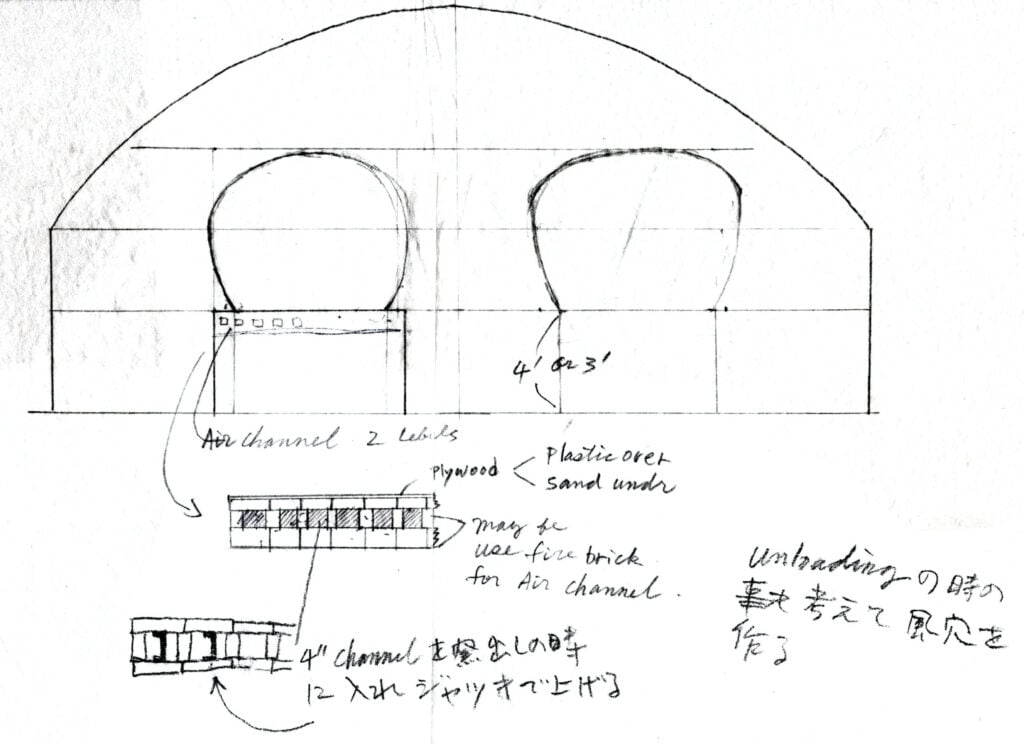
Sketch with cross-section of kiln shelving and design notes,Graphite on paper.
1983
Photo: Jun Kaneko Studio
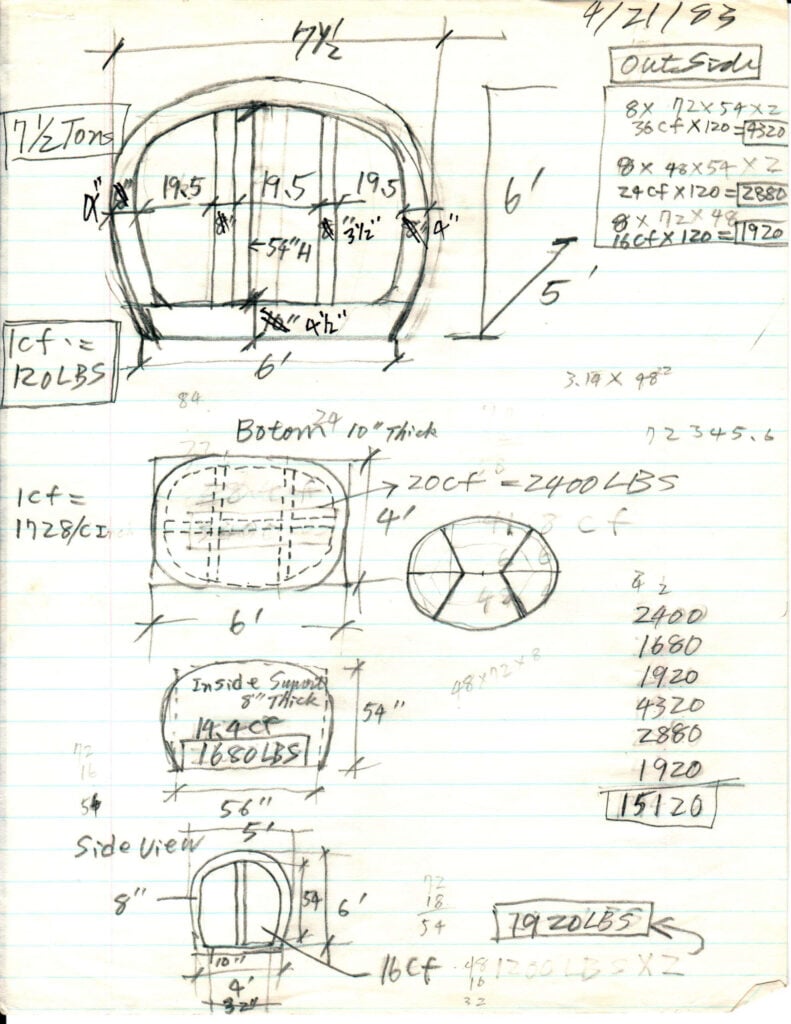
Sketch with cross-section design and dimensions of Dangos,Graphite on paper.
1983
Photo: Jun Kaneko Studio
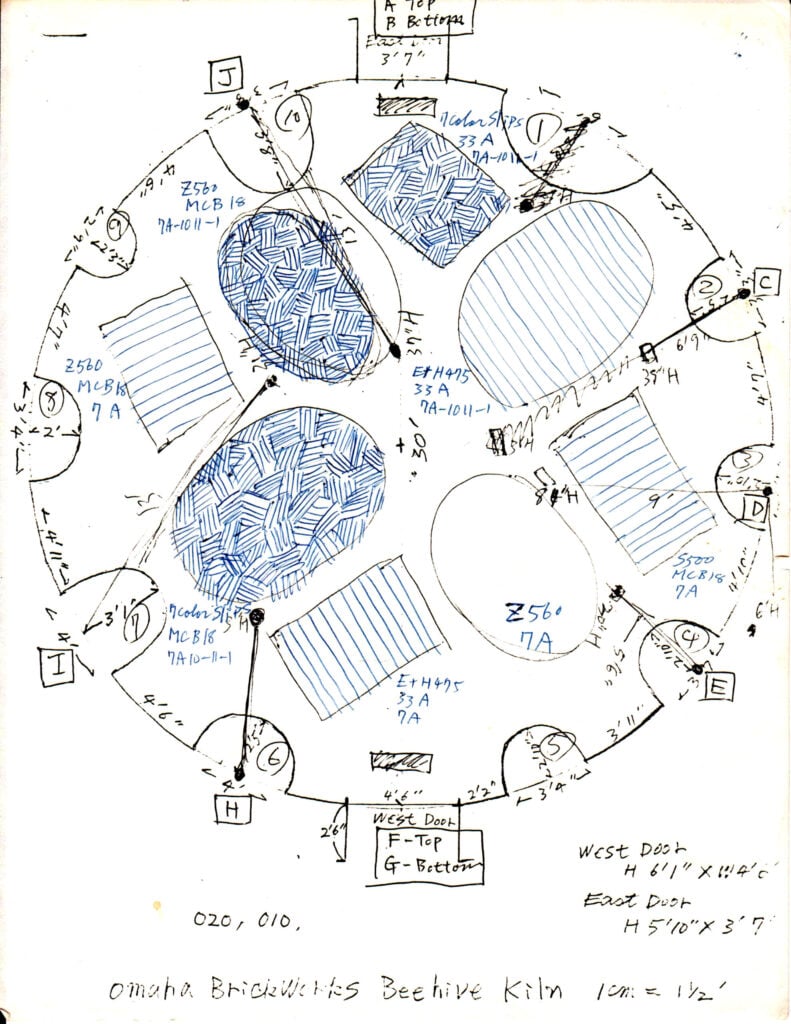
Layout for kiln load with interior dimensions, Ink on paper.
1983
Photo: Jun Kaneko Studio

Interior view of the Omaha Brickworks kiln with the construction of brick pedestals.
1983
Photo: Jun Kaneko Studio

Preparing clay for the bases of the Dangos on brick pedestals.
1983
Photo: Jun Kaneko Studio

Building the oval bases of the Dangos inside the Omaha Brickworks kiln.
1983
Photo: Jun Kaneko Studio
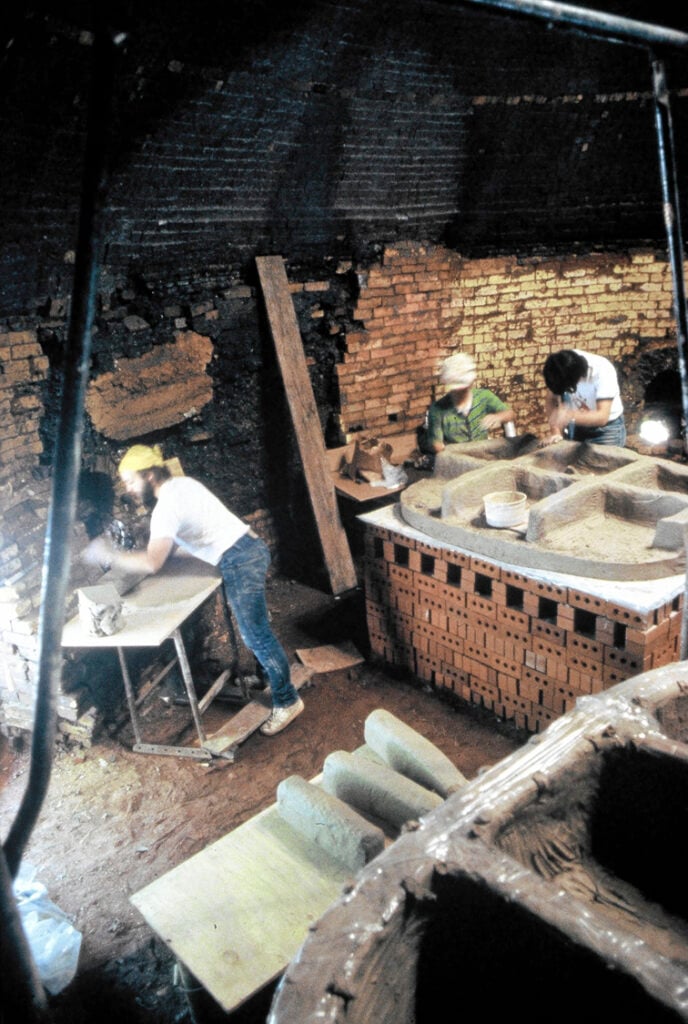
Building the interior walls of the Dangos inside the Omaha Brickworks kiln.
1983
Photo: Jun Kaneko Studio

Building the walls of a Dango inside the Omaha Brickworks kiln.
1983
Photo: Jun Kaneko Studio

Exterior view of the Omaha Brickworks kiln with clay.
1983
Photo: Jun Kaneko Studio

Scaffolding provides access for construction of the Dango walls.
1983
Photo: Jun Kaneko Studio

Jun and an assistant finishing the construction of the Dangos.
1983
Photo: Jun Kaneko Studio
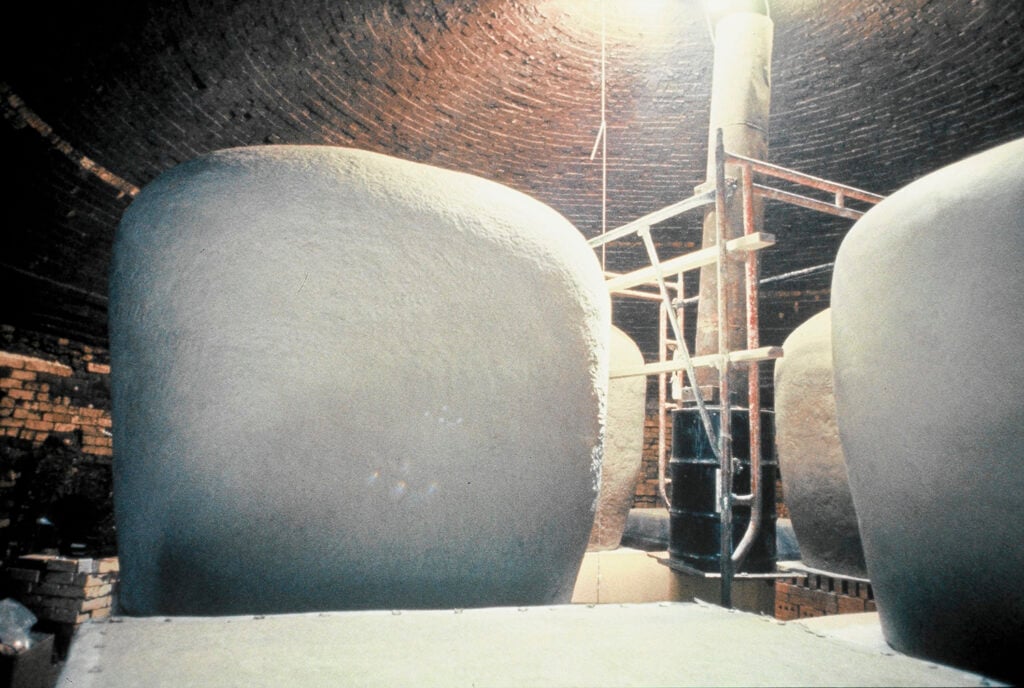
Dangos in the kiln before firing.
1983
Photo: Jun Kaneko Studio

Jun glazing a Dango inside the kiln.
1983
Photo: Ree Kaneko

Jun glazing a Dango inside the kiln.
1983
Photo: Jun Kaneko Studio

Dangos at various stages of the glazing process.
1983
Photo: Jun Kaneko Studio
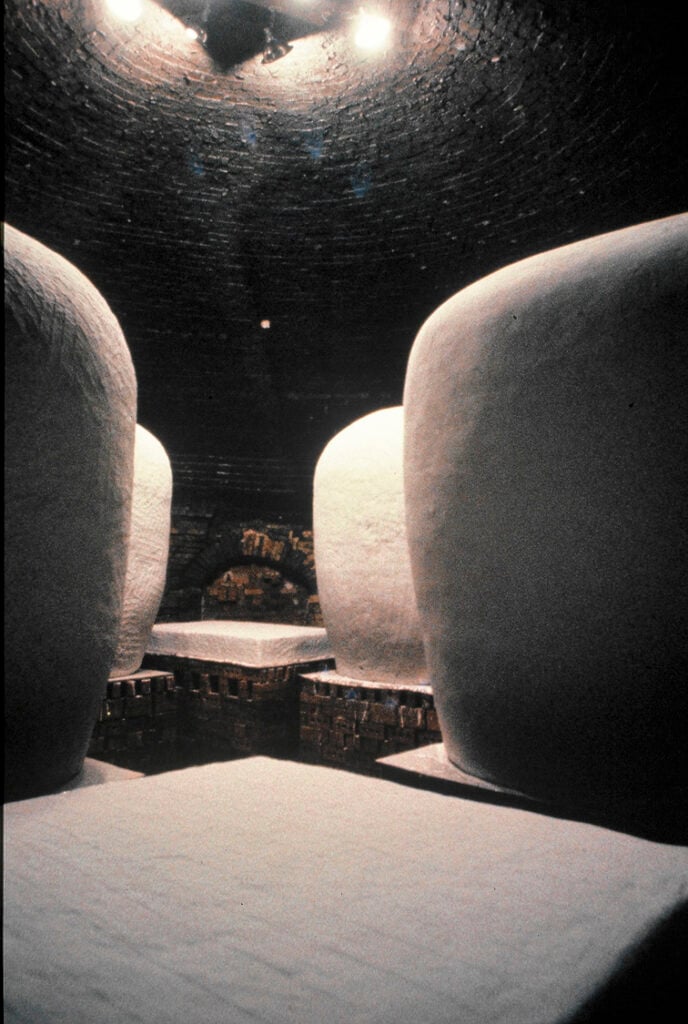
Final view of the Dangos before firing.
1983
Photo: Jun Kaneko Studio

Exterior view of the Omaha Brickworks kiln.
1983
Photo: Jun Kaneko Studio

View of the Dangos and a Slab after firing. Each Dango is 7 x 8 x 6 feet and weighs 5.5 tons.
1984
Photo: Jun Kaneko Studio

Completed Dango being removed from the glaze kiln.
1984
Photo: Jun Kaneko Studio

Detailed view of a completed Dango.
1984
Photo: Jun Kaneko Studio
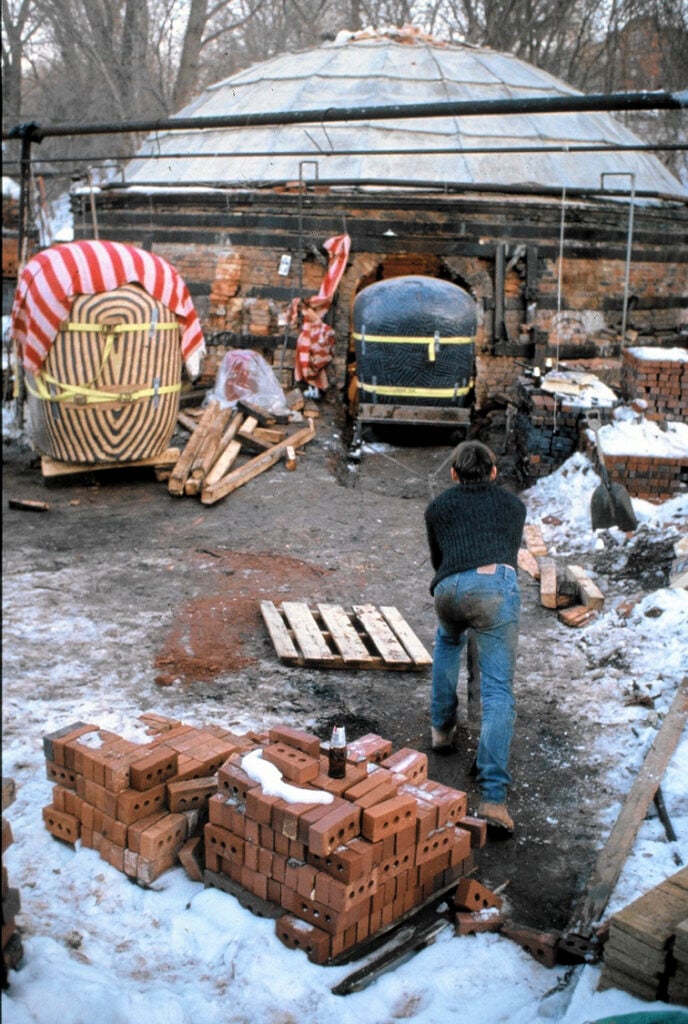
Removing the completed Dangos from the kiln.
1984
Photo: Jun Kaneko Studio

Completed Slabs after removal from the kiln.
1984
Photo: Jun Kaneko Studio
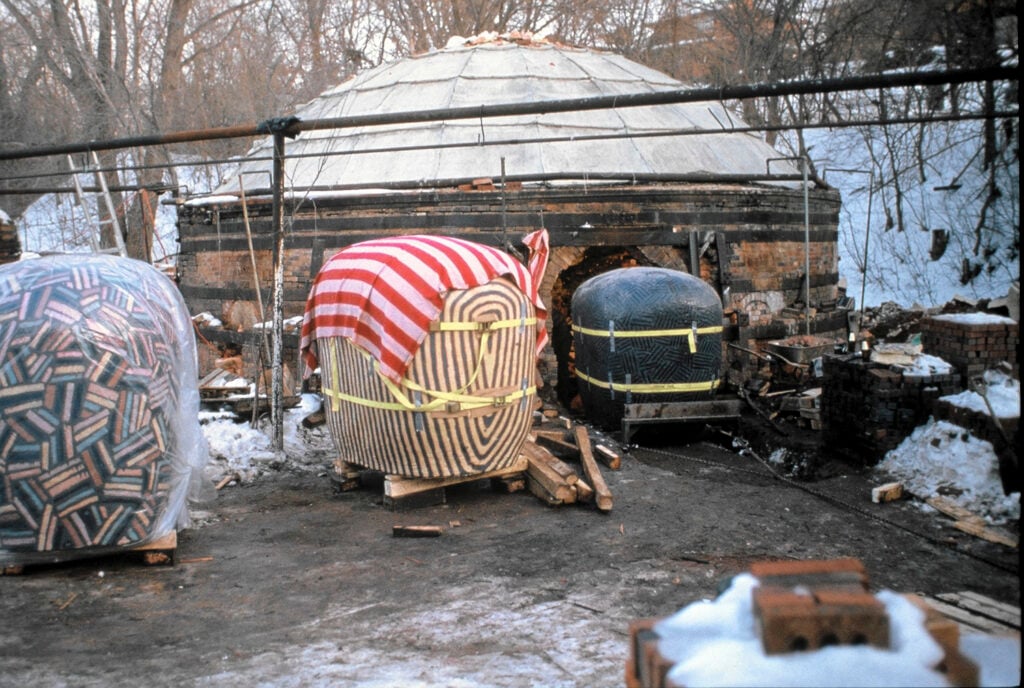
Completed Dango being removed from the glaze kiln.
1984
Photo: Jun Kaneko Studio

Dangos loaded onto the flatbed of a truck, ready for transport.
1984
Photo: Jun Kaneko Studio
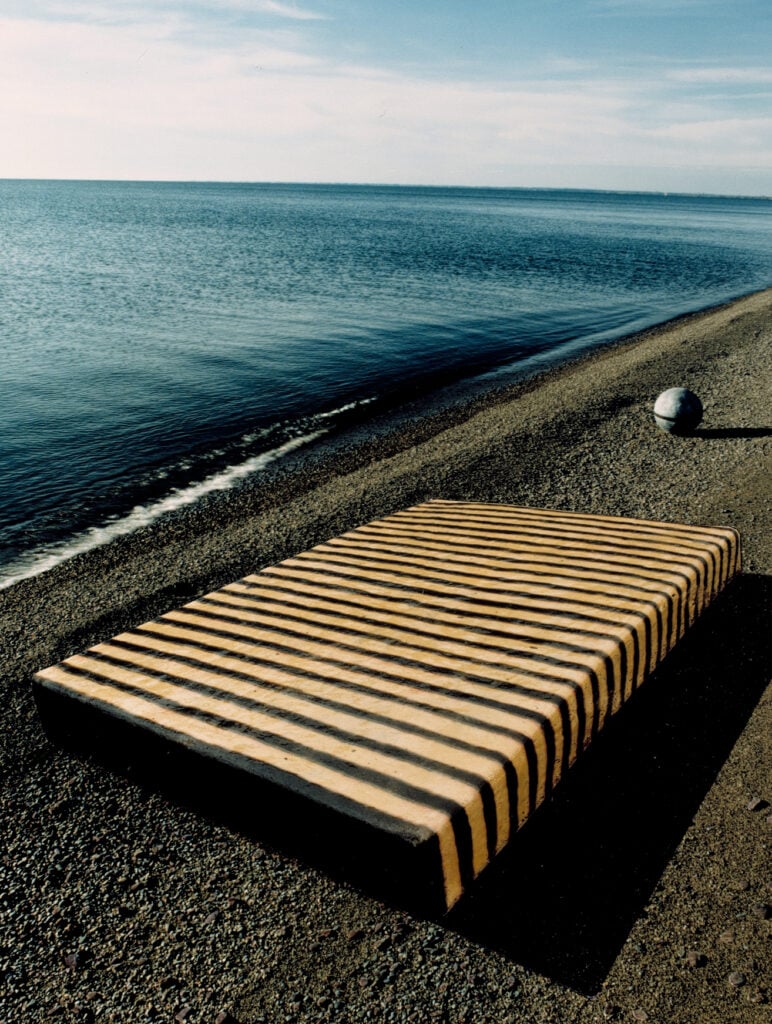
Untitled, Omaha Slab
1984
Hand built and glazed ceramics, 48 x 96 x 8 inches.
Photo: Misha Gordin

Untitled, Omaha Dangos
1984
Dango hand built and glazed ceramics, 72 x 84 x 60 inches.
Photo: Jun Kaneko Studio

Untitled, Omaha Slab
1984
Slab hand built and glazed ceramics, 48 x 96 x 8 inches.
Photo: Jun Kaneko Studio

Untitled, Omaha Slab
1984
Slab hand built and glazed ceramics, 48 x 96 x 8 inches.
Photo: Jun Kaneko Studio